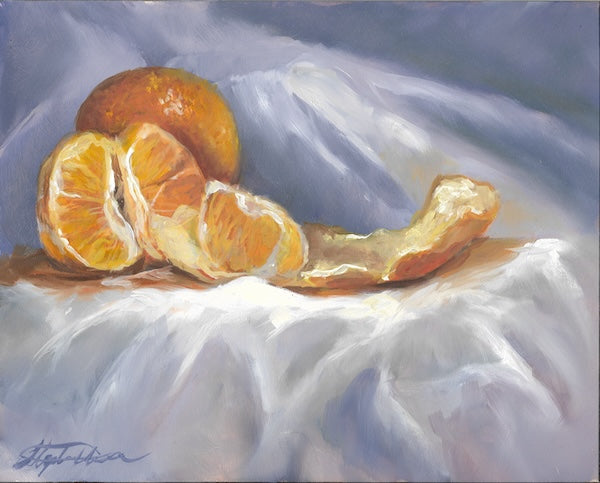Frequently Refreshed Collection of Oil Paintings for Sale
Frequently Refreshed Collection of Oil Paintings for Sale
Blog Article
The Advantages of Purchasing Oil Paintings: Why They Are a Timeless Investment
The benefits of purchasing oil paints prolong past mere looks. These art work carry historic significance and cultural worth, making them worthwhile additions to any collection. Their special appearances and strategies add to an appealing aesthetic experience. Well-known artists usually see their job appreciate over time, providing a possible economic advantage. As one explores the diverse reasons for investing in oil paintings, the deeper effects of such an option become progressively apparent
The Aesthetic Allure of Oil Paints
The appeal of oil paintings hinges on their abundant structures and lively colors, which can change any room into an interesting environment. These art work have a depth that astounds visitors, drawing them into the details of the brushstrokes and the interplay of light and darkness. The shiny surface of oil paint improves the visual experience, enlivening scenes and subjects in a method that mediums often can not accomplish. Additionally, the range of styles-- from classical to modern-- permits a varied selection that can complement any style. The psychological resonance conveyed via shade selections and strategies adds a layer of link in between the art work and the viewer, making oil paints not just ornamental things, however effective expressions of creative vision.
Historical Importance and Social Value
Oil paints serve as necessary web links to an artistic heritage, showcasing techniques and styles that have advanced over centuries. They envelop social expressions and identities, reflecting the worths and stories of their time. By getting these works, individuals add to the preservation of background and the admiration of varied social heritages.
Creative Heritage Preservation
While lots of might neglect the importance of imaginative heritage, buying oil paints plays a necessary function in maintaining historical and social stories. These art work offer as aesthetic documentation of their time, catching the essence of social worths, traditions, and historic occasions. By getting oil paints, collection agencies add to the securing of social legacies, guaranteeing that future generations can learn and appreciate from these artistic expressions. Each piece shows the special tale of its maker and the context in which it was made. Additionally, the continued admiration and screen of oil paints in different setups aid to foster an understanding of varied imaginative motions, improving the social landscape. Therefore, purchasing oil paints is not merely a monetary decision yet an act of social stewardship.
Social Expression and Identity
Art acts as a powerful tool for social expression and identity, showing the diverse narratives that shape societies. Oil paints, in particular, record the essence of cultural heritage, illustrating sociopolitical environments and historical contexts. Each brushstroke communicates feelings and tales unique to particular traditions, enabling viewers to engage with the artist's social history. This link cultivates a feeling of comprehending and belonging among various communities. Furthermore, oil paintings typically work as visual paperwork of cultural evolution, showcasing changes in identification in time. The investment in these artworks not just supports artists but additionally preserves cultural legacies, making them significant properties for collectors. Ultimately, oil paintings enhance one's gratitude for the complexities of human experience and the rich tapestry of social identity.
Recognition in Value Over Time

The gratitude of oil paints over time is influenced by various variables, including historical value fads that reflect changing preferences and social importance. Furthermore, the reputation of the musician plays a vital function in identifying the artwork's market price, usually increasing as the musician gains acknowledgment. Market demand variations can additionally affect rates, making oil paints a possibly lucrative financial investment for enthusiasts.
Historical Value Trends
As enthusiasts look for to buy substantial assets, the historical worth fads of oil paints reveal a compelling story of gratitude with time. Historically, oil paintings have actually demonstrated a consistent higher trajectory in worth, especially for jobs by recognized musicians. Economic cycles and market demand have affected these fads, with periods of raised passion typically leading to substantial cost surges. Auction records frequently highlight the impressive returns achieved by famous items, better enhancing the concept of oil paints as viable lasting investments. Furthermore, cultural motions and shifts in collector preferences have occasionally stimulated unanticipated appreciation, revealing that the art market, while somewhat unpredictable, usually favors top quality oil paintings. Comprehending these historic trends can lead financiers in making educated choices.
Artist Credibility Effect
While the reputation of a musician plays a necessary function in the gratitude of oil paintings, it is necessary to recognize that this effect can differ considerably based on a number of elements. Developed musicians, especially those with a considerable historical or cultural impact, have a tendency to see their works appreciate extra quickly. Conversely, lesser-known or emerging musicians might not experience the same level of need, impacting their artwork's value. In addition, the musician's capacity to produce a constant body of job and maintain significance in the art world can affect lasting recognition. Enthusiasts usually look for works from artists who are identified by respectable galleries and institutions, which can even more improve the worth of an oil paint gradually, making musician online reputation a vital factor to consider in financial investment decisions.

Market Need Variations
Exactly how do market need fluctuations affect the recognition of oil paints over time? The value of oil paints is inherently connected to market demand, which can differ based on financial problems, patterns, and collection agencies' preferences. In times of financial success, demand typically climbs, bring about enhanced rates as even more customers go into the market. Conversely, during financial slumps, demand might decrease, causing values to stagnate or perhaps decrease. Furthermore, the appeal of specific musicians can change, affecting their work's worth. Eventually, understanding market demand is important for investors, as well-managed collections can appreciate substantially gradually, showing both the skill of the musician and the broader market characteristics. This interaction underscores the value of critical acquiring in oil painting investments.
Distinct Appearances and Methods
Oil paintings captivate viewers with their distinctive structures and techniques, showcasing the musician's proficiency over the medium. The thick application of paint, here called impasto, develops a three-dimensional result, inviting touch and boosting aesthetic deepness. Musicians commonly use various brush strokes, layering, and polishing techniques to attain luminescent shades and detailed information. This convenience enables rich contrasts and refined shifts, making each art work distinctly meaningful. Furthermore, the sluggish drying out time of oil paint enables musicians to blend shades seamlessly, leading to vibrant tones and smooth gradients. These techniques add to the paint's total personality, making it a compelling prime focus. Each oil paint works as an indication of the creativity and ability integral in standard imaginative practices.
Versatility in Home Decor
The unique appearances and techniques of oil paints not only showcase imaginative skill but likewise enhance their versatility in home design. These artworks can effortlessly enhance different interior designs, from modern minimal to standard beauty. Oil paintings act as focal factors, attracting attention and triggering discussion amongst guests. Their rich colors and depth can integrate with various shade palettes, making them adaptable to altering style fads. Furthermore, the psychological resonance of oil paintings can develop atmosphere, whether it be heat in a relaxing living-room or vibrancy in a creative work space. By incorporating oil paintings, home owners boost their areas, changing them into attentively curated settings that reflect individual preference and creative admiration. Ultimately, oil paintings are a long-lasting selection for enhancing home visual appeals.
Link to Popular Musicians
While many art types can stimulate adoration, acquiring oil paintings frequently establishes a special link to prominent musicians throughout background. Owning an oil painting enables enthusiasts to involve with the creative visions of masters like Van Gogh, Monet, and Rembrandt. Each brushstroke personifies the musician's strategies, purposes, and emotions, supplying insight right into their world. This link transcends time, as each piece lugs a narrative that mirrors the historic and social context of its production. Enthusiasts not just acquire a job of art but likewise a piece of the artist's tradition. As art fanatics check out the stories behind these paintings, they obtain a much deeper gratitude for the workmanship and imaginative activities that formed their growth, boosting the value of their financial investment.
Psychological and psychological Benefits of Art
Art frequently functions as a powerful stimulant for mental and emotional wellness. The visibility of oil paints in a living space can stimulate a variety of feelings, from tranquility to motivation. Their elaborate details and dynamic shades use audiences a retreat, allowing for representation and contemplation. Studies recommend that engaging with art can lower stress and anxiety, promoting a feeling of calmness. In addition, owning initial artwork can produce an individual connection, boosting feelings of pride and pleasure. This emotional bond typically causes a deeper gratitude of one's environments, changing a residence right into a home. Ultimately, the emotional benefits of art expand beyond appearances, adding to total mental wellness and improving life experiences.

Frequently Asked Inquiries
How Do I Choose the Right Oil Painting for My Room?
Selecting the right oil paint entails thinking about the space's color scheme, dimension, and overall visual. One need to review individual taste, the painting's emotional effect, and exactly how well it matches existing style before making a choice.

What Variables Influence the Worth of an Oil Painting?
The value of an oil painting is affected by aspects such as the artist's track record, provenance, historical relevance, rarity, condition, and market need. Each component adds to total worth and desirability among collectors.
Just How Can I Look After and Keep My Oil Paint?
To care for and maintain an oil paint, one need to routinely dirt it with a soft towel, stay clear of straight sunshine direct exposure, control moisture degrees, and think about specialist cleansing to maintain its vibrancy and stability.
Exist Particular Artists Recognized for Their Oil Paints?
Many musicians are renowned for their oil paintings - oil paintings for sale. Remarkable figures include Vincent van Gogh, Claude Monet, and Rembrandt, each commemorated for their one-of-a-kind techniques and contributions to the art globe with vibrant, distinctive oil mediums
Where Can I Purchase Authentic Oil Paintings?
Genuine oil paintings can be purchased from reputable galleries, art fairs, and on the internet systems specializing in fine art. Collectors should confirm the authenticity and provenance before purchasing to ensure a useful investment. Historically, oil paintings have actually demonstrated a constant higher trajectory in value, specifically for works by established musicians. While the credibility of a musician plays a vital role in the admiration of oil paints, it is crucial to identify that this effect can vary considerably based on a number of elements. Oil paintings astound customers with their distinctive appearances and techniques, showcasing the artist's proficiency over the medium. While numerous art types can evoke affection, purchasing oil paintings frequently develops an unique connection to popular artists throughout background. The value of an oil paint is affected by aspects such as the artist's online reputation, provenance, historical importance, problem, rarity, and market need.
Report this page